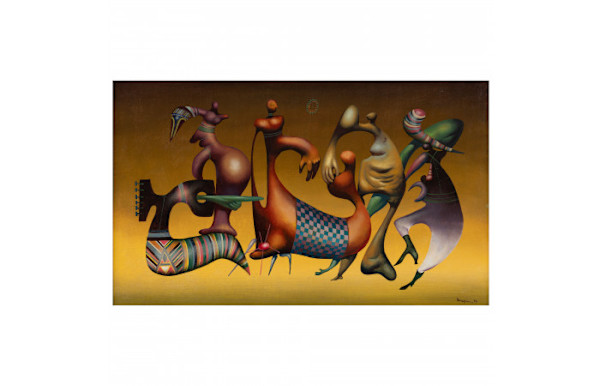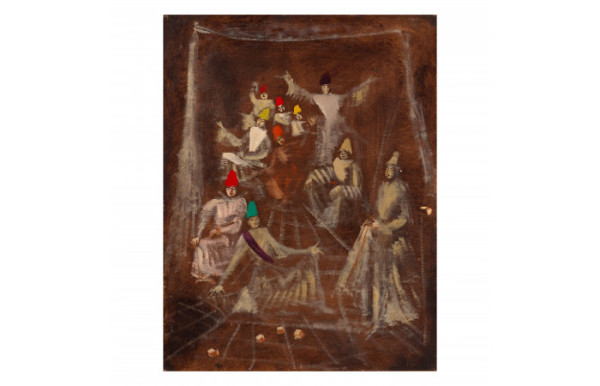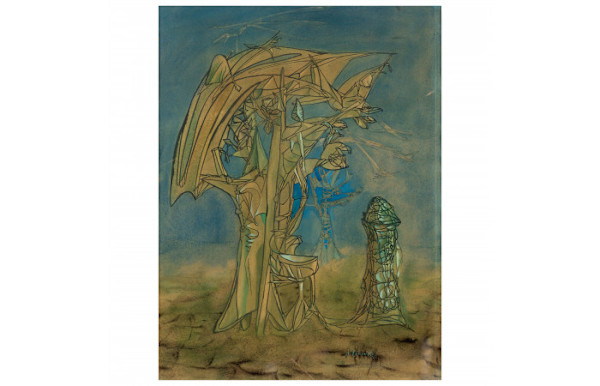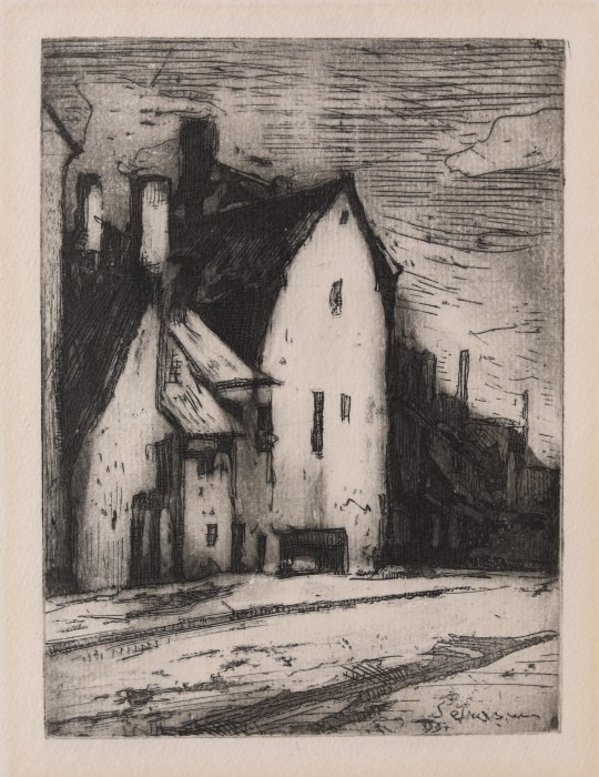- Iosif Iser
- Nude Lying Down, 1941
- Oil On Canvas
- 50 x 61 cm
- Signature: signed bottom right, in red, "ISER"; dated bottom left, in black, "(19)41"
-
Installed
A constant presence in the fashionable circles of the time, Iosif Iser’s image is that of a cosmopolite, polished character, one of surprising elegance. Having been raised in a rich and educated family of Ashkenazi Jews, he has a legitimate penchant for beauty, which he pursues and applies on all levels of existence. He discovers his artistic interests as early as in high school at Piteşti, just like his desk mate, the poet Ion Minulescu. After almost 10 years of studies in Munich (The Royal Academy of Fine Arts) and in Paris (the Ranson of Montmartre and Humbert of Montparnasse Free Academies), Iser came back in the country, where he carried out his work until the end. His debut was a highly successful exhibition, the first contemporary art exhibition in the country, opened in 1909 at the Romanian Atheneum, where his works were presented along with those of the French André Derain, Jean Luis Forain, and Démétrius Emmanuel Galanis. Starting from that year, Iser became a constant and always appreciated presence in the artistic circles of Bucharest and Paris, being present every year in the Official Salon selections, and his personal exhibitions enjoyed great success. Even during the right-wing extremism, when the antisemitic legislative system did not allow him to exhibit, Iser worked fervently; he fully dedicated himself to his career, being a constant supporter of the "l’art pour l’art" concept. His creation started from Jugendstil and Expressionism, gradually and inconspicuously progressing towards Cubist geometrizations in Cezanne manner. Having relations with left-wing circles, Iser concerned himself with socially-engaged works of art, being a constant militant of equality for all people. An exceptional drawer, he often published satirical graphics in left-wing magazine and newspapers such as: Adevărul, Facla, Flacăra, Furnica, Le Témoin, Le Rire, Lustige Blätter, Jugend, Simplicissimus, Papitu, Rampa, or Viaţa Literară. Throughout his career, we note his fascination with the human face, which he captured solemnly, without any lyricism, and always with a stark expressive force. He discovered his passion for the nude, always feminine, during a trip to Spain that lasted several months (April-September 1930), where he was fascinated with the psychological dimension of Goya’s erotic nude: "Maja desnuda", displayed at the Prado Museum in Madrid. The feminine body, in a sensual stance, matches the idea that the artist is trying to capture: "the extent of the human passions". In his treatment of the nude, Iser gives up on graphism, and his works gain tremendously in terms of picturality. The sensualist Expressionism, which was fleeting in the artist’s creation, was not representative for him; shortly after returning to the country, Iosif Iser returned to his old concerns, deeply anchored in social matters. A prolific artist, Iser was a promoter of Romanian Modernism, being a champion for the new conception on art, which was prevalent in the interwar period.
ENACHE, Monica, "Călătorie în Bretania. Artişti evrei şi români descoperind cultura bretonă (catalog)" ("Journey to Brittany. Jewish and Romanian artists discovering Breton culture (catalogue)"), MNAR Publishing House, 2009.
ENACHE, Monica, "Destine la răscruce. Artişti evrei în perioada Holocaustului (catalog)" ("Destinies at the crossroads. Jewish artists during the Holocaust (catalogue)"), MNAR Publishing House, 2010
- Collections: Contemporary/Modern/Abstract





![Circus [1967] by Magdalena Radulescu](https://assets.artworkarchive.com/image/upload/t_jpg_medium_width/v1/user_94430/A_L423_149_l8qjae.jpg)





